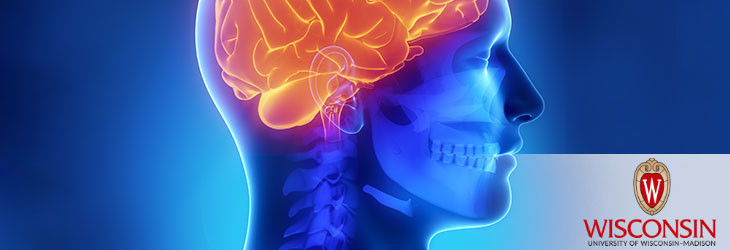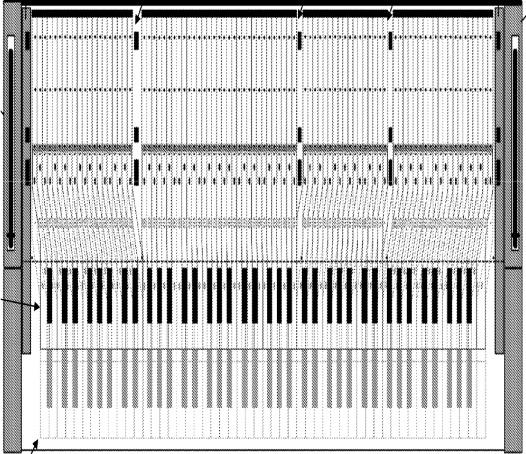Miscellaneous

New Dual Keyboard Console That Transmits Data to Two Player Pianos
WARF: P100172US01
Inventors: Christopher Taylor
The Wisconsin Alumni Research Foundation (WARF) is seeking commercial partners interested in developing a double keyboard piano system that produces richer sounds and more diverse chords than the traditional Moor-Duplex piano because of an improved mechanical design.
Overview
A piano produces a tone when the user presses a key, causing a hammer to strike a small group of strings. Most pianos have 88 keys with each key having its own hammer and strings. A Moor-Duplex piano is a modified piano consisting of two keyboards stacked together, but only the normal allotment of hammers and strings. The keys of the upper keyboard produce tones one octave higher than the corresponding keys of the lower keyboard. Because of their complex mechanical design, these pianos are difficult to maintain and play; thus only about 60 pianos were produced using this design and none are sold or manufactured today.
Another variation of the traditional piano is a player piano, a piano that can play notes and use the pedals independent of a human operator. One brand of player piano is the Yamaha Disklavier, which uses electromechanical solenoids and optical sensors to play the notes. Most models can record and replay human performances and have inputs to receive data in the musical instrument digital interface (MIDI) format from a variety of sources.
Another variation of the traditional piano is a player piano, a piano that can play notes and use the pedals independent of a human operator. One brand of player piano is the Yamaha Disklavier, which uses electromechanical solenoids and optical sensors to play the notes. Most models can record and replay human performances and have inputs to receive data in the musical instrument digital interface (MIDI) format from a variety of sources.
The Invention
A UW–Madison researcher has developed a modified version of the Moor-Duplex piano — a double keyboard console, which controls two player pianos using Disklavier-compatible technology. The console comprises two stacked 88-key piano keyboards with two complete sets of hammers that strike felt instead of strings when a key is played. A system of sensors and processors, together with a communication interface, allows the pianist’s keystrokes to be transmitted from the double keyboard console to the two player pianos, which then produce the actual notes. Additionally, there are a total of five pedals on the console: three that are found on traditional pianos, a fourth as found on Moor-Duplex pianos that allows a single key to activate multiple hammers and a fifth to control the exact behavior of the fourth pedal, among other functions.
Applications
- Digital playback or recording
- Can be used in combination with two Disklavier pianos
Key Benefits
- Produces richer sounds and more diverse chords
- Pianist can control two pianos simultaneously.
- Fifth pedal greatly enhances the console’s capabilities.
- Overcomes the mechanical design constraints of the Moor-Duplex piano, giving a feel more like that of a traditional piano
Additional Information
For More Information About the Inventors
Related Technologies
Tech Fields
For current licensing status, please contact Emily Bauer at [javascript protected email address] or 608-960-9842
Figures
